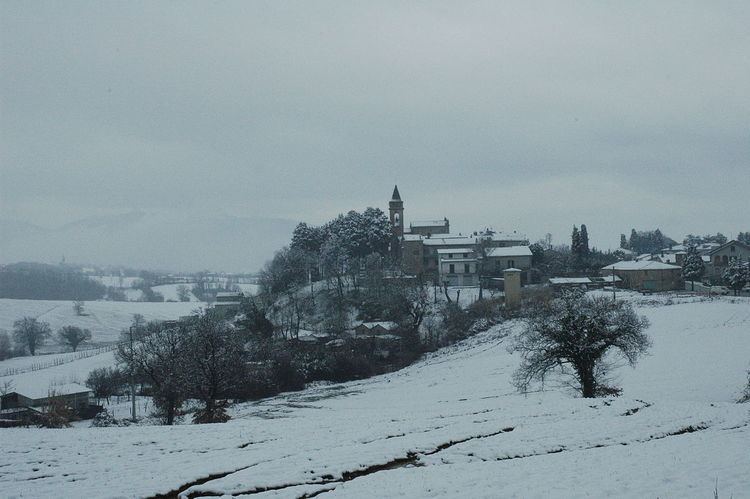Country Italy Province TR Demonym(s) Farnettani Elevation 385 m Population 283 (31 Aug 2007) | Region UMB Time zone CET (UTC+1) Local time Thursday 7:10 PM Postal code 05026 | |
 | ||
Weather 13°C, Wind N at 10 km/h, 39% Humidity | ||
Farnetta is a small village set in Terre Arnolfe countryside, 16 miles northwest from the Italian city of Terni, Umbria. Farnetta is included in the comune of Montecastrilli in the province of Terni (central Italy). It has a population of 283.
Contents
- Map of 05026 Farnetta Province of Terni Italy
- History
- Main sights
- Dunarobba fossil forest
- Culture
- Transport
- Economy
- Demography
- List of people from Farnetta
- References
Map of 05026 Farnetta, Province of Terni, Italy
Farnetta derives its name from the old Latin name Quercus Frainetto and is reputed to be one of the smallest villages in Umbrian region consisting of several farms, houses and a church dedicated to St Nicolaus, which has its origins in the 16th century but is mainly 19th century and underwent heavy restoration in 1860. The church has been designated by Italian Heritage.
Close by, on a hill, there exists the remains of a Medieval hill fort known as Palombara and the 10th to 11th-century Romanesque-style Church of San Lorenzo in Nifili. San Lorenzo was built on the remains of a Roman building, and incorporates large stone blocks from that building. The church is located on an important Roman road (Via Amerina) connecting Amelia to Todi and Perugia.
History
It is likely that the area was also inhabited in the Iron Age and throughout the Roman period. There are numerous elements of early Roman infrastructure in the area, and being in proximity with the course of a Roman roads Amerina and Flaminia. It appears that the area would have been extensively settled.
The name's origin is traditionally connected to the toponym of Quercus Frainetto (a type of oak). During the ancient Roman domination the area was along a branch of the via Amerina.
The village was later part of the Terre Arnolfe, and was later subjected to Todi and Terni. Farnetta was listed in the Farfa Abbey register in 1112.
Main sights
Farnetta at 385 meters above sea level, part of the territory is a Natural Park (protected area: "Zona di ripopolamento e cattura") of Farnetta. Trails cross the park.
Its historical center at one time was surrounded by medieval walls but, now mostly torn down, leaving only short stretches and a few cylindrical towers that at one time served as part of the town's defenses.
The church of San Nicolo. Nicolaus is located in the old part of town, begun in the 16th century and completed in the 19th century by the Nevi family. The church includes 18th-century paintings.
Dunarobba fossil forest
The Fossil Forest of Dunarobba, near Farnetta (3 km), is one of the oldest woods in the world. Two million years ago the sea definitely withdrew. In its place an ancient lake called Tiberino came to being flourished. The waters, coming down from the hills and the mountains which were emerging, must have carried huge quantities of sediments that along with tectonic movements, must have covered the vegetable giants and preserved them.
Culture
Farnetta is known for its St. Rita feast, held each year the last week of may. During the feast a trattoria is organized by the inhabitants with traditional food.
Other medieval towns and villages are present near Farnetta: Todi (17 km), Sangemini, (10 km), Spoleto (42 km), Carsulae (12 km), Orvieto (38 km).
Transport
Farnetta is situated near to two numbered routes. The A1 goes north to Florence and south-west to Rome. The E45 goes north-east to Perugia and south-east to Terni and Spoleto.
Farnetta is served by ATC bus services to Terni, Todi, Sangemini, Montecastrilli, Avigliano, Amelia.
Economy
Agriculture was important for the inhabitants of Farnetta in the context of rural development and poverty reduction. The village today has made use of its past and has built a tourist industry. Many "agriturismi" (farm holidays) are present in the territory of Farnetta.
Demography
The population of the civil parish, recorded in the 2001 census, is 246. In the 13th century the population was about 500 (96 fireplaces).
